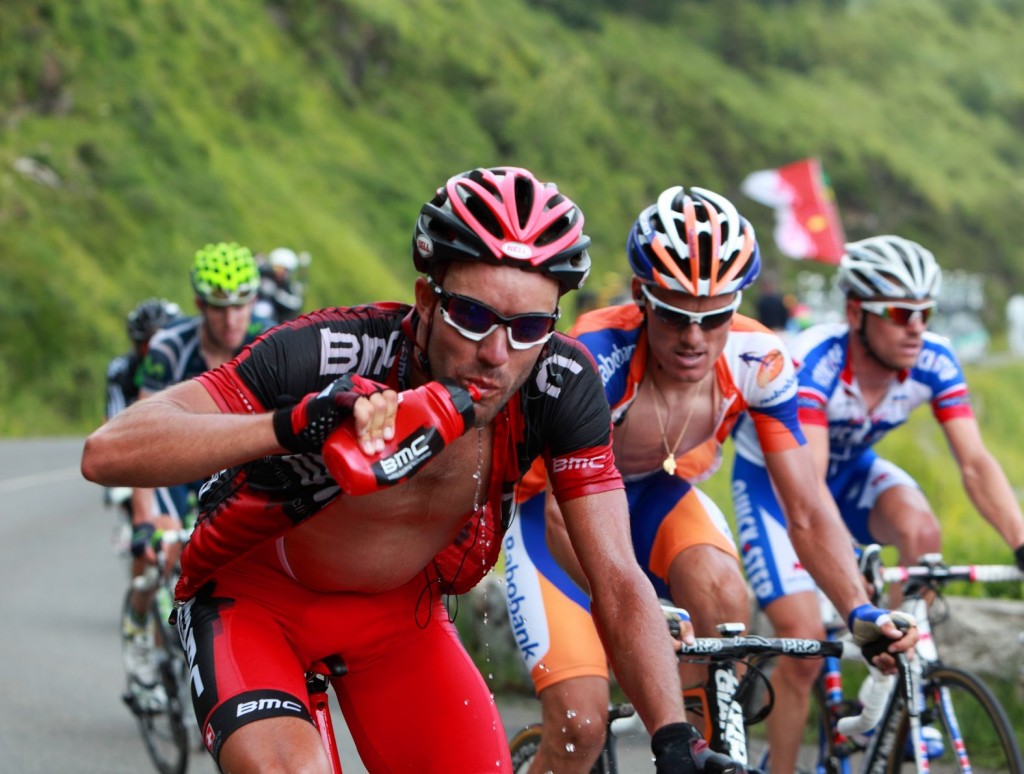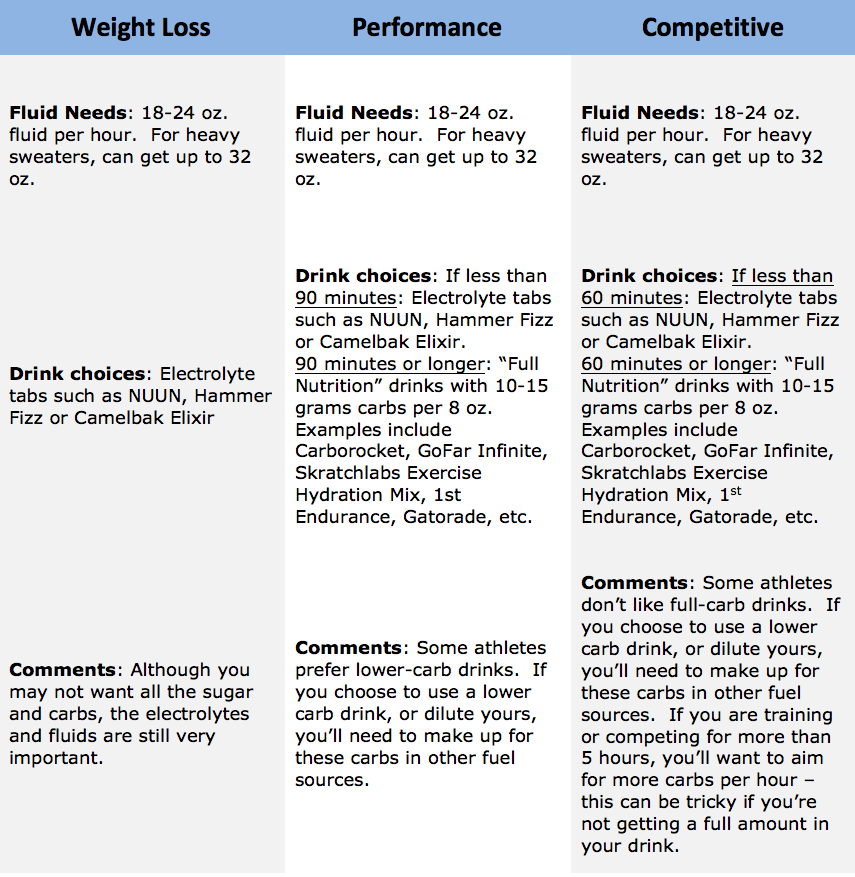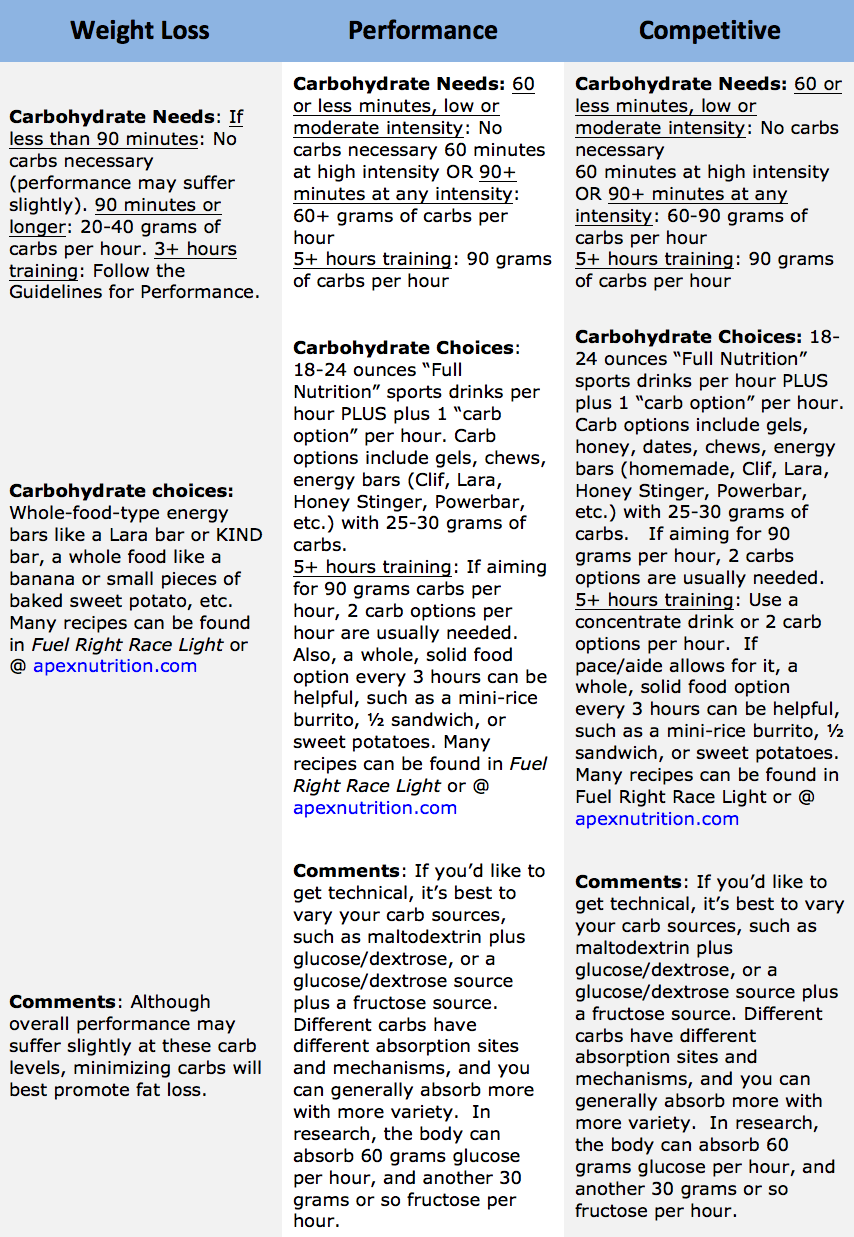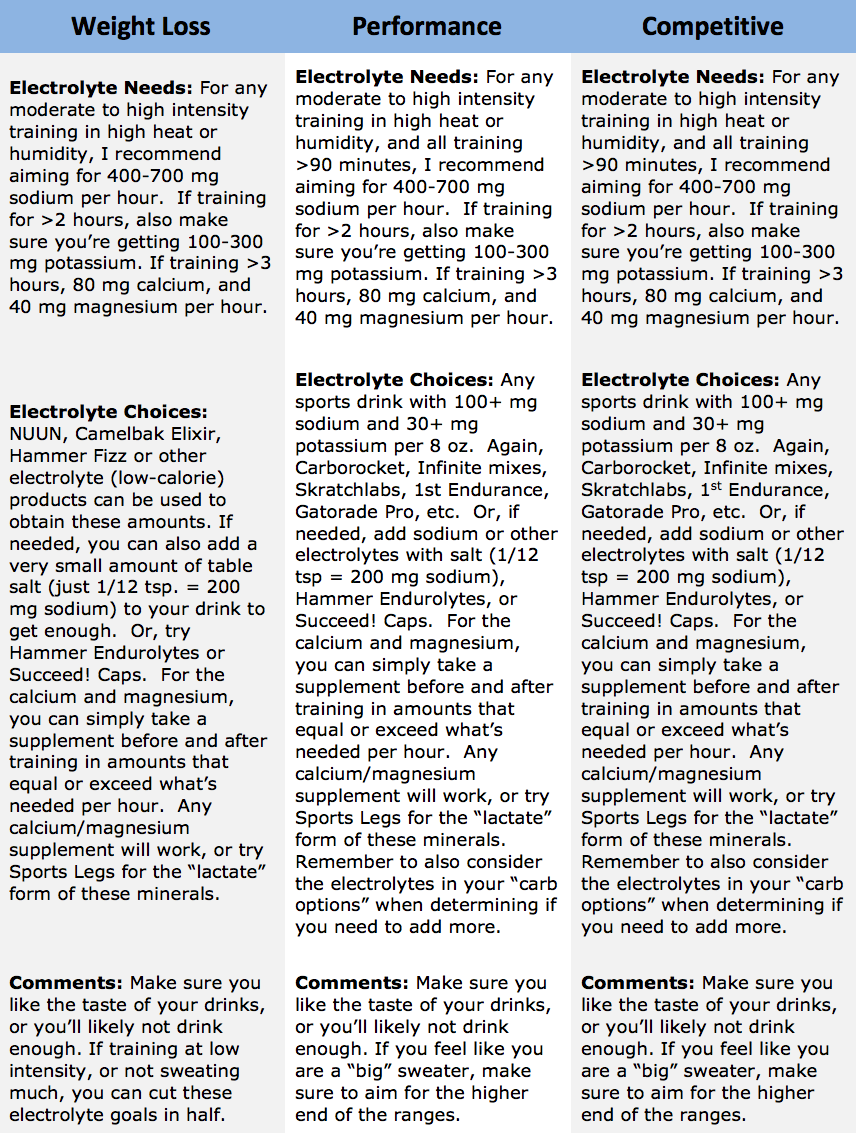3 Keys to Training Fuel While Riding
Here’s an understatement:
 These days, you have a lot of options for training fuel. As in a bazillion. There are so many options, many athletes become overwhelmed, confused, and frustrated trying to make a choice. It seems like a distant past when only two or three commercial sports drinks were available, and there was one type of energy bar with three flavors. Most times, I like variety. But, when faced with so many options, it’s good to have a foundational understanding of what you need before you open up the wallet.
These days, you have a lot of options for training fuel. As in a bazillion. There are so many options, many athletes become overwhelmed, confused, and frustrated trying to make a choice. It seems like a distant past when only two or three commercial sports drinks were available, and there was one type of energy bar with three flavors. Most times, I like variety. But, when faced with so many options, it’s good to have a foundational understanding of what you need before you open up the wallet.
There are three keys to ensuring you get the fuel you need during training. Despite being in the midst of sports nutrition product and information overload, many athletes fail to meet these three keys consistently. Whether or not they realize it, it’s likely affecting their performance. These are the foundation.
Before diving into the big three, first establish your goals and priorities. Your nutrition plan will follow.
Are you a mountain biker who wants to optimize performance above all else? Is your main goal to get better, faster and stronger and set new personal bests? Maybe you’d also love to lose a few pounds, but when you’re on your bike, you mostly want to improve. I’ll call this goal group performance athletes.
Is weight loss your main goal? Are you biking simply because you want to lose weight and/or improve health? Are you less concerned about getting better and better at biking and more concerned about your body size and weight loss? I’ll call this goal group weight-loss athletes.
Lastly, are you a competitive athlete? Not only do you want to get better and prioritize your performance, but you want to win. You push yourself to the limit in your races, and many of your training sessions mimic this intensity. You don’t care one ioda about taking in too many calories when riding. You want whatever fuel it takes to be your best. This group will be called competitive athletes.
Do you fit within any of these three? Maybe or maybe not. Of course there’s a lot of gray area, and you can form your own title that combines them. Remember: This is not some overall life goal. This is simply your training goal. It drives your nutrition plan, and it’s important to fuel yourself to meet your goal. Here’s how each group can use the three keys of training fuel.
Key #1: Fluids
Fluids are paramount, as both chronic and acute dehydration directly affect performance. Even a tiny amount of weight loss from sweat (1 to 2% of body weight) can increase your sense of effort, cause nausea, decrease appetite and reduce performance. The vast majority of athletes are at least slightly dehydrated day to day and within training. What’s an athlete to do?
Anytime you’re training for more than 60 minutes, I recommend hydrating during training, from at least the 30-minute mark onward. If you’re training for 60 minutes or less, you can likely get by with no hydration as long as you’re well-hydrated going into training. Or, you can take along water.
In high heat or humidity, you must hydrate while training—no matter the duration. But, what about over-hydration? I’ll cover this below in the electrolyte section. Over-hydration is really too little electrolytes compared to the amount of fluid intake. It’s not the fluid that’s the problem, but the lack of electrolytes.
Within each goal group, there’s subtle difference in my fluid recommendations.
Quick Tip: Want to know exactly how much fluid you need during training?
Weigh yourself immediately before and after training, in the buff or in only underwear if possible. If not, have on the same clothes both times. Calculate every pound lost as 16 fluid ounces. Then, add in any fluid you consumed during training. This is the amount of fluid you lost during that specific exercise session. Plan to hydrate proactively for the next one.
You can also take this a step beyond and estimate your sodium needs: It’s estimated that you lose 800-1250 mg of sodium per liter of sweat (about 1000 mg/liter on average for easy math). Once you know how much fluid you’re losing, you can estimate how much sodium you’re losing. If you lose about 25 oz. fluid in sweat each hour (approx. 0.75 liters), you’re likely losing around 750 mg sodium.
Key #2: Carbohydrates
Simply put, you will perform better when you add efficient carbohydrates to any training greater than 60 minutes. Many athletes can push through without negative affects until 90 minutes. My rule of thumb: Add carbs if training at high intensity for 60+ minutes or at any intensity for 90+ minutes.
Your body needs fuel during training from some source. If you’re looking to improve performance and train with any sort of high intensity, it will usually work best to provide that fuel source in the form of efficient carbs. If you’re goals are more weight-loss driven, you can reduce your carbs and oxidize or burn more fat.
But beware, omitting fuel and oxidizing fat doesn’t necessarily mean fat loss in the long term as you may not train as well or may overeat later in the day because you’re under-nourished. It simply means that you’ll oxidize more during that workout.
Quick Tip: The goal is NOT to try to consume every calorie of output.
It’s generally a bad idea to try to consume every calorie you burn while training, even at a competitive racing level. Why? The limiting factor is digestion. Your body is under physical stress while training, and does not want or need to deal with huge amount of food and drink (many athletes burn upwards of 1000 calories per hour at high intensity). In many ways, less is more, and you’ll avoid many stomach and low energy issues by consuming enough, but not too much, in small amounts every hour of training.
Key #3: Electrolytes
These are the tiny, often-forgotten, deal-breaker nutrients of training nutrition. Don’t get enough, and you’ll risk dehydration, over-hydration and/or the big bonk. It’s a balancing act, but not too difficult to accomplish.
Electrolytes—and especially sodium—are needed during training to improve carbohydrate absorption, water/fluid absorption, and to maintain the delicate balance of plasma fluids and particles in your blood. Potassium, chloride, calcium and magnesium, can also play a factor, but don’t seem to be as acutely necessary as sodium.
Quick Tip: It’s not too much water, but too little sodium or other electrolytes that causes over-hydration.
Generally, over-hydration occurs when the ratio of fluid in the plasma is no longer balance with the amount of sodium in the plasma. The electrolytes are diluted. By only drinking water when training, especially when sweating a lot due to intensity, heat and humidity, you’re at high risk for diluted electrolytes if you’re only drinking water. What’s more, your body may choose to dehydrate further and cause an increase in urine output in an effort to reduce bodily fluid and re-establish fluid to electrolyte balance. Either way, it’s not a good situation.
Keep these tips in mind during training. Remember: fluids, carbs and electrolytes. The types and amounts depend on your goals, and training intensity and duration. Of course, you can go beyond these three keys and look at amino acids, whole proteins, functional nutrients and more to optimize your plan. And usually, when working with athletes, we do go beyond this foundation. Sometimes extra functional nutrients really help, and other times they cause more problems than they’re worth. Above all else, the three keys are the best start. They’re the foundation, and they’ll make a big difference in your performance.



